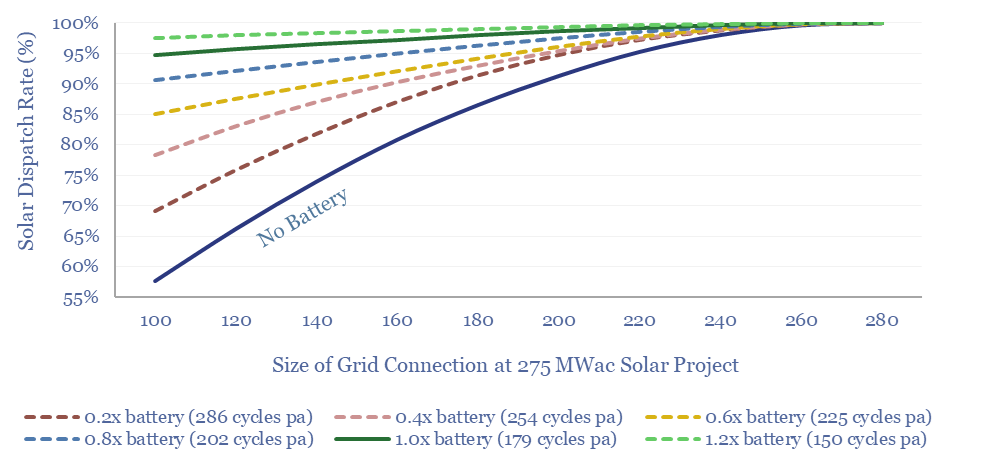This 9-page study finds unexpectedly strong support for co-deploying grid-scale batteries together with solar. The resultant output is stable, has synthetic inertia, is easier to interconnect in bottlenecked grids, and can be economically justified. What upside for grid-scale batteries?
There are many different reasons that might motivate the deployment of a grid-scale battery, as tabulated on page 2. The most common is at a grid node, for load shifting and power price arbitrage, in ever-steeper duck curves.
But interestingly, we have seen a different model gaining traction in 2022-24, which is co-deploying renewables plus batteries, as explained on page 3.
The key rationale motivating co-deploying grid-scale batteries with renewables is to circumvent power grid bottlenecks and interconnection queues, which are biting for the reasons on page 4.
We can simplify the complexity for how the co-deployment of a battery alongside a utility-scale solar project might work, by returning to a data-file from earlier in 2024, which plotted the output every 5-minutes from a 275MW solar project in Australia. Our ‘battery rules’ and modeling framework are explained on page 5.
The results are fascinating. We find that battery co-deployments can allow a solar installation to dispatch about 95% of its power through a 65% smaller grid connection, while the asset can generate a highly stable, high-inertia power output across c50% of all hours across the year, which makes 2-3x better use of bottlenecked transmission capacity than a raw solar output. These numbers and sensitivities are explained on pages 6-8.
Co-deploying batteries is more expensive than standalone solar, but it can be economically justified, for the reasons on page 9.
Overall, our analysis may help the deployment of solar, LFP batteries and their supply chains.
